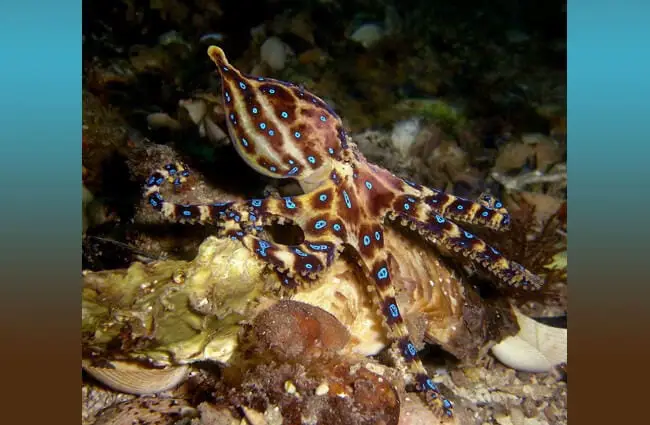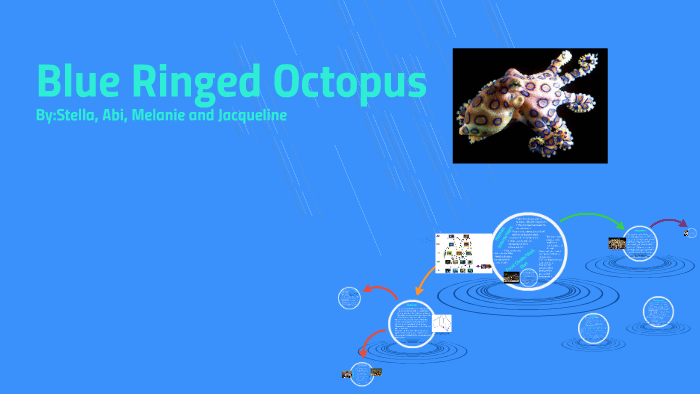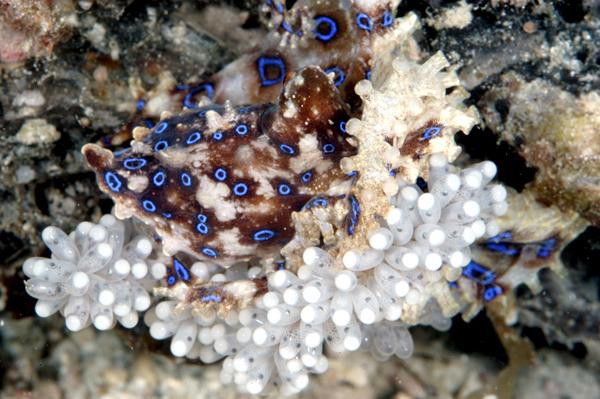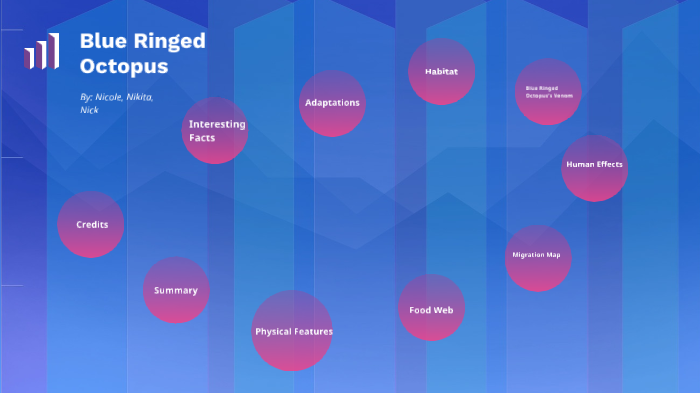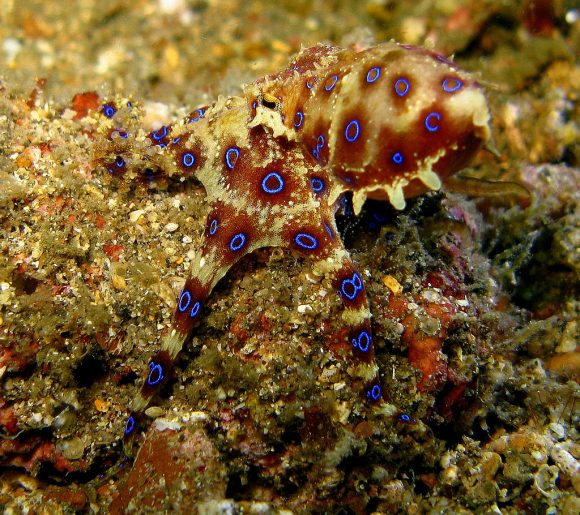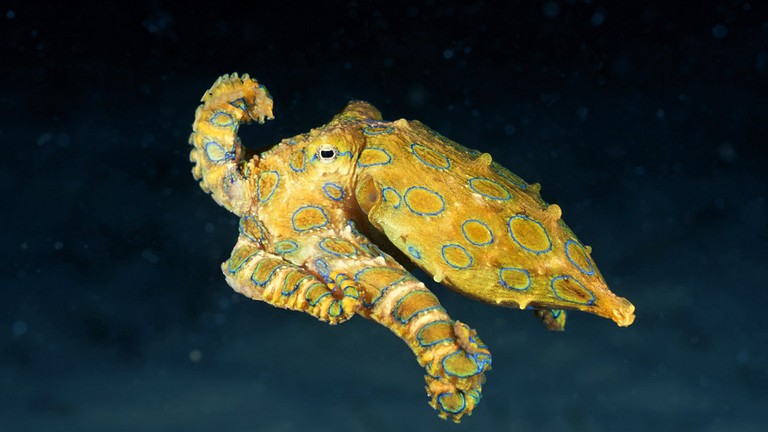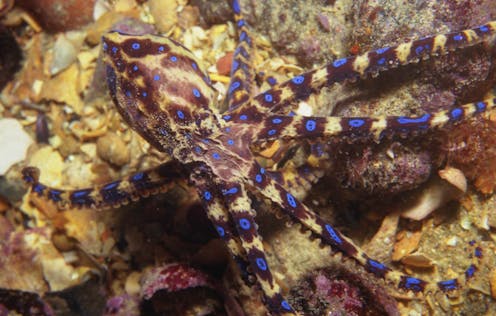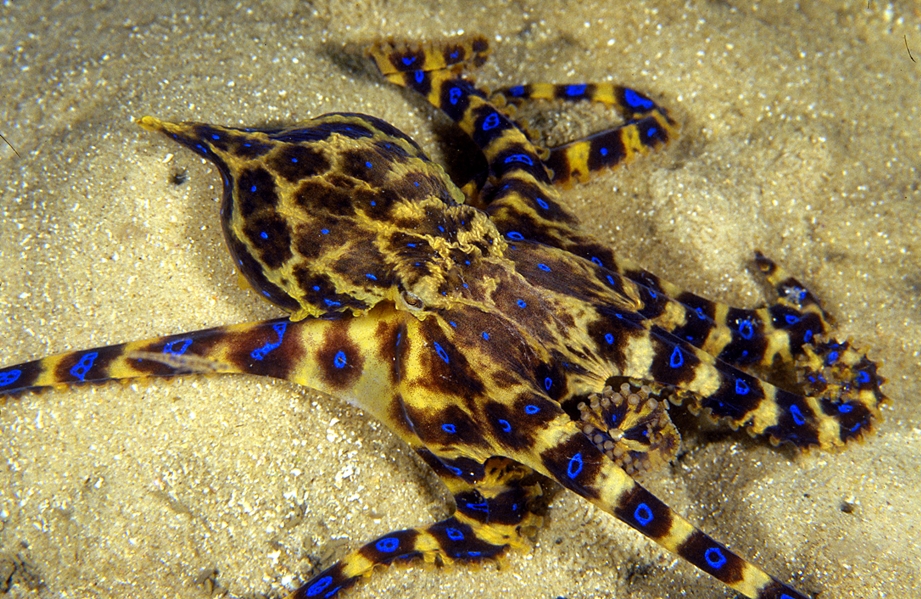Blue Ringed Octopus Food Chain

This is the food chain of the blue ringed octopus.
Blue ringed octopus food chain. Shrimp and crab populations would increase with less preying on them. They can be identified by their yellowish skin and characteristic blue and black rings that change color dramatically when the animal is threatened. Blue ringed octopuses comprising the genus hapalochlaena are four highly venomous species of octopus that are found in tide pools and coral reefs in the pacific and indian oceans from japan to australia. What eats a blue ringed octopus.
Also by mating they are creating more animals that will be contributing to the ecosystem. Blue ring octopus are found in rock pools sheltered rocky holes old shells discarded bottles throughout australia new zealand papua new guinea indonesia fiji and japan. Blue ringed octopuses are some of the most venomous marine creatures in the world. These small members of the cephalopod family are also related to other octopus species along with squid cuttlefish and nautilus you can easily recognize these small octopuses because of the bright blue rings covering their bodies.
Most food chains have consumers decomposers and producers. Food chain if you search up some examples of food chains it will show you how they work and what happens when an animal passes away. Clever small and deadly. Thus they contribute to science.
Blue ringed octopus are one of australia s most venomous poisonous creatures. They aren t a give away to predators or even to humans the octopus is lurking behind his incredible camouflage armed with one of the most deadly weapons on earth. The blue ring octopus helps regulate the food web by consuming animals. Lowering the numbers of these organisms will impact the rest of the reef systems as well.







